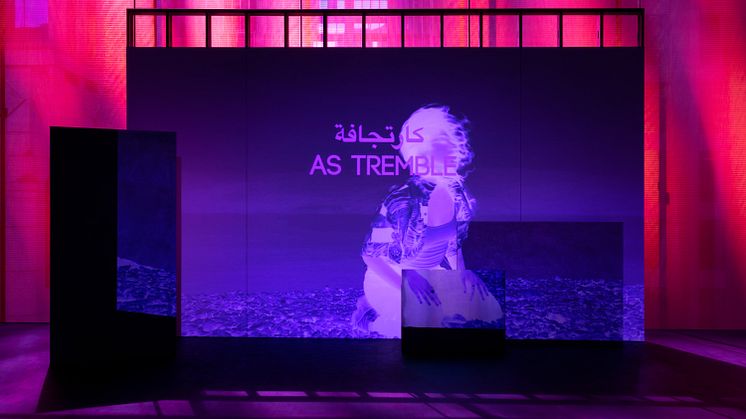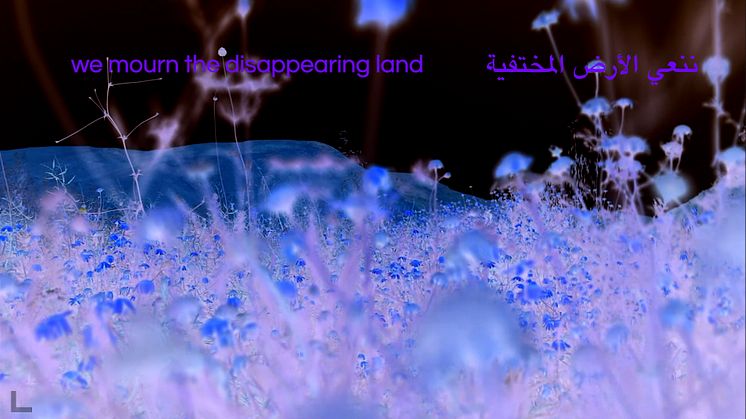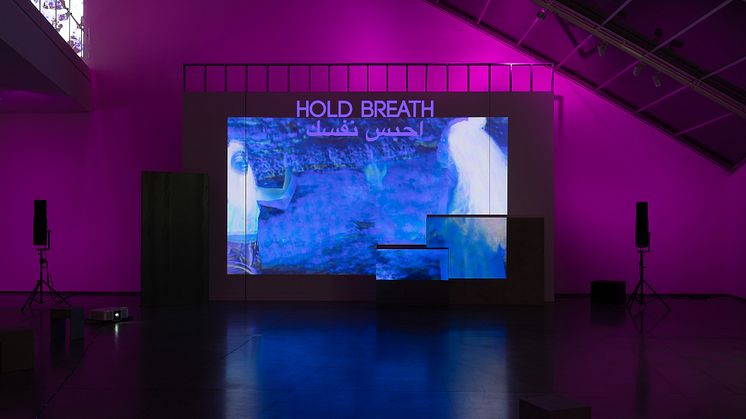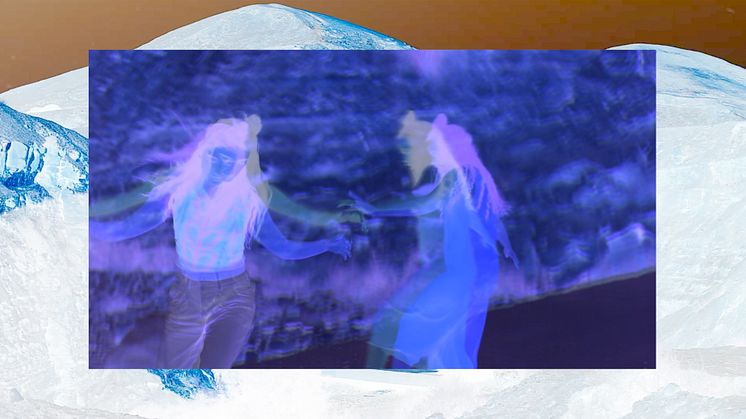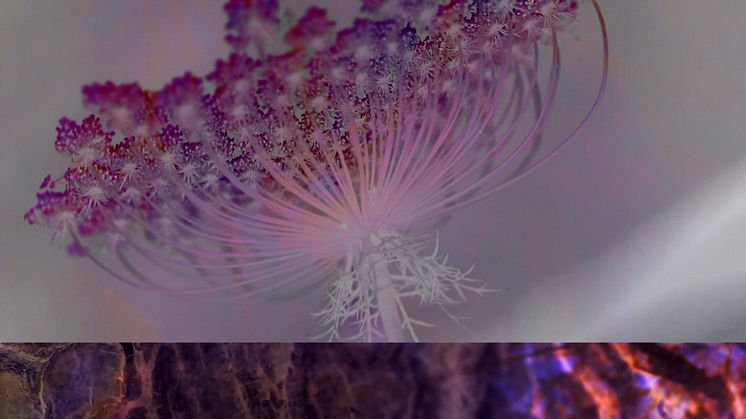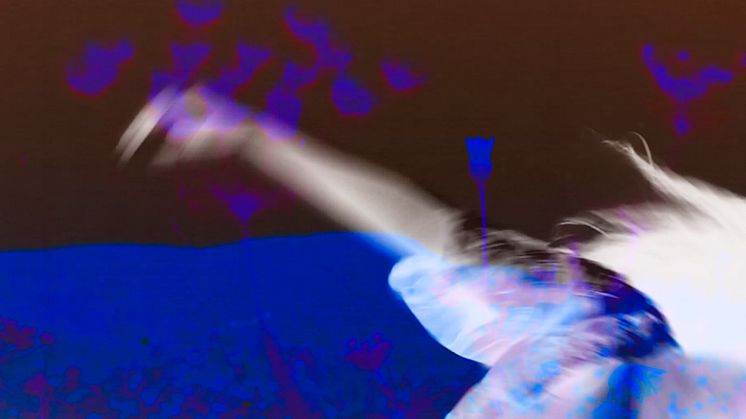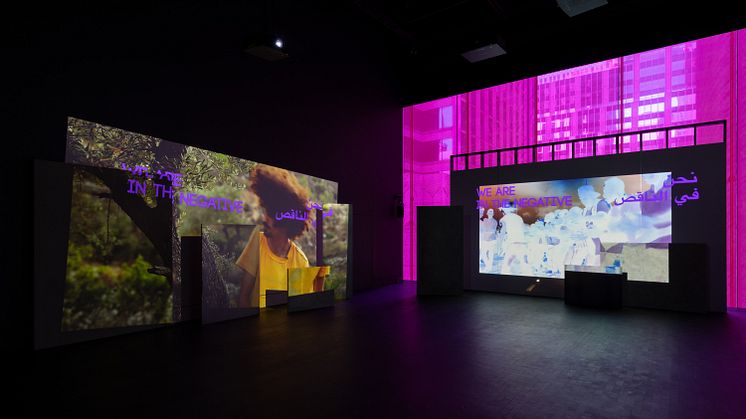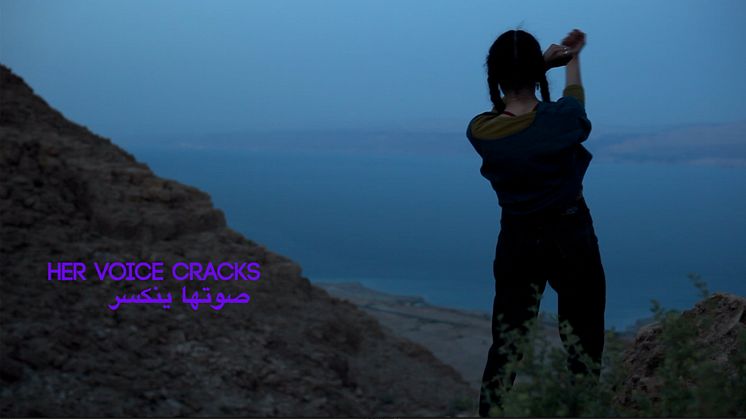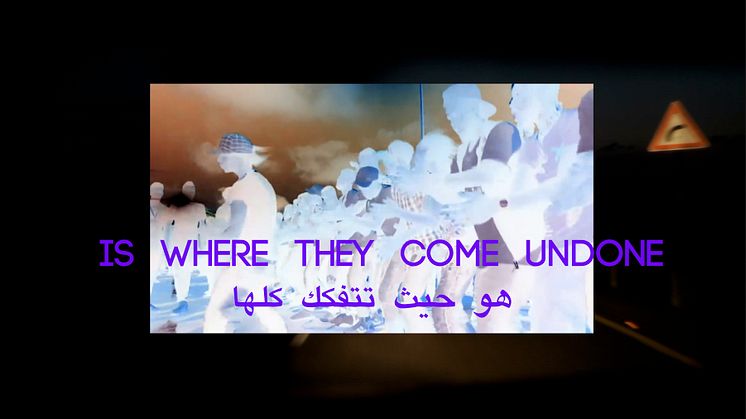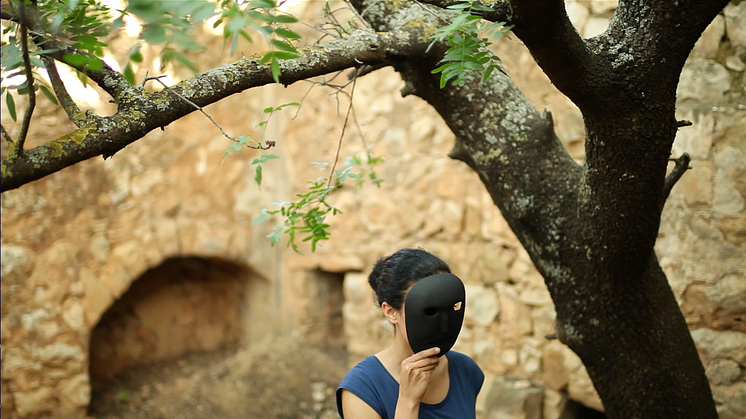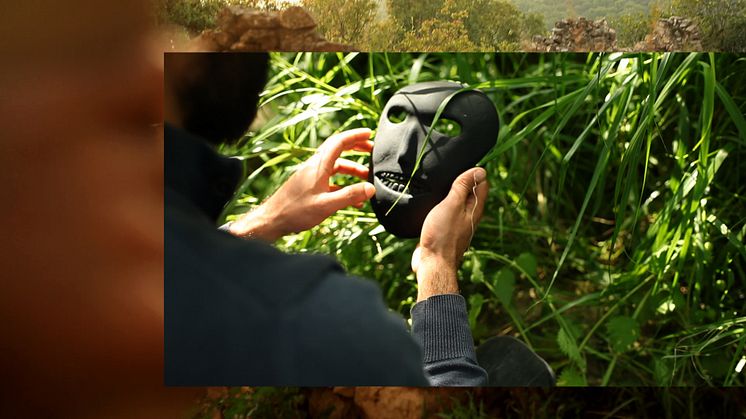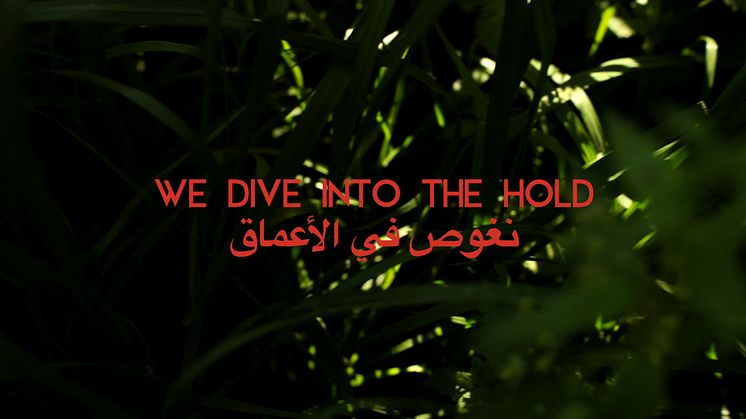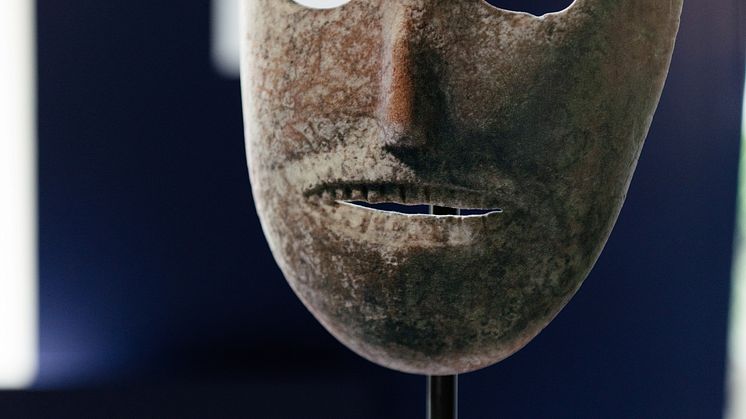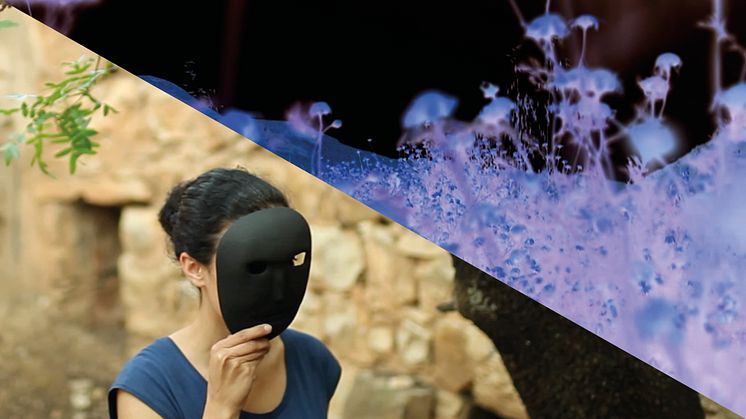
Press release -
World-renowned Palestinian artist duo envelops Copenhagen Contemporary and the Glyptotek in powerful resistance poetry
With their thought-provoking and visually striking works, Basel Abbas and Ruanne Abou-Rahme fill two of Copenhagen’s largest art institutions with electronic soundscapes, sampled archival material, 3D-printed ancient masks and images layered with quotes from critical and poetic texts in Arabic and English. The two-part exhibition, The song is the call and the land is calling, which unfolds at both institutions simultaneously, dives into the profound connection between cultural heritage and identity, and draws connections between narratives of struggle and shared dreams of liberation across different lands, histories and political contexts. The exhibition, which is one of the artists’ most comprehensive institutional shows to date, is the second in a three-year collaboration between Copenhagen Contemporary and the Glyptotek.
The press viewing will be held at both Copenhagen Contemporary and the Glyptotek on June 12 from 9:30 AM to 12:30 PM, where refreshments will be served, and the exhibition's curators and artist will give an introduction. Registration and interview inquiries: ida@cphco.org

Basel Abbas & Ruanne Abou-Rahme
The song is the call and the land is calling
14.06.-29.12.24
At the heart of Basel Abbas and Ruanne Abou-Rahme’s artistic practice is a profound inquiry into collective memory and the power of cultural expression. With backgrounds in sound and experimental film, Basel Abbas and Ruanne Abou-Rahme have developed an internationally renowned body of work that encompasses video, sound, image, text, installation and performance practices. Often evolving as long-term research projects, their works unfold as immersive multi-layered media installations, delving into themes of collective spirit, belonging and self-determination amidst histories of loss, violence and displacement.
As a two-part cross institutional exhibition, The song is the call and the land is calling puts on view several of Abbas and Abou-Rahme’s key works in new and expanded iterations, as well as a new work based on the Glyptotek’s ancient collection. The exhibition unfolds in the slippages between erasures and reappearances, dispossession and resistance, histories of colonialism and attempts at new livelihoods, exploring how histories of collective resilience resonate in our contemporary cultures. By referring to their works as ‘poetics of resistance’, the artists highlight their enduring interest in how marginalised communities can mobilise hope and collectively foster new social and political potentials despite living with the consequences of oppressive political systems.
Speaking about their own experience as Palestinians, the artists elaborate:
“Because you’re in this continual state of precarity [as Palestinians], you have this constant sense that you don’t actually exist. This idea of breathing where you should not be able to breathe is also a question of continuing to be, continuing to claim yourself, to claim space and to claim narrative, to claim your story and your testimony. We started thinking a lot about how to exist, then, in these impossible conditions. What are the tools that we can use not just to survive, but also to generate different possibilities?”
With this year’s exhibition, Copenhagen Contemporary and the Glyptotek seek to investigate the deep connections between cultural heritage and identity by asking: What is the place and power of cultural heritage when forces of imperialism and colonial occupation threaten to uproot and erase entire communities from a land? How can the perception of cultural heritage be strengthened, not merely as relics of the past but also as immaterial culture, acting as living testimonies to the resilience, creativity and ingenuity of humanity? And, ultimately, how can cultural heritage in all its various forms be a question of human rights and the freedom to self-determination?
The works at Copenhagen Contemporary
Basel Abbas and Ruanne Abou-Rahme’s presentation at Copenhagen Contemporary will take shape as a new site-specific iteration of three combined works: the immersive multi-channel sound and video installation May amnesia never kiss us on the mouth: Only sounds that tremble through us (2020–22), the sculptural installation Where the soil has been disturbed (2022) and the textile banner piece Low cloud hum (2023).
May amnesia never kiss us on the mouth is a multi-part research project examining how disintegrated communities bear witness to experiences of violence, loss, displacement and forced migration through performance. Since the early 2010s, Abbas and Abou-Rahme have collected online recordings of people singing and dancing in communal spaces in Iraq, Palestine, Yemen and Syria. Accompanied by new sound compositions and poetic text excerpts, the work brings these recordings together with new filmic performances conceived by the artists with dancers and musicians from Palestine.
According to Abbas and Abou-Rahme, the common denominator of these fractured communities is their efforts to resist their own erasure and – through acts of performative agency – lay claim to space, self and collectivity once more. Zooming in on ephemeral bodily expressions, like singing or dancing, the artists point to the physical act of performance – both in solitary and collective forms – as a critical space for resilience and an ever-evolving repository of memory.
The works at the Glyptotek
Three bodies of works will be on show at the Glyptotek from Abbas and Abou-Rahme’s long-term research project And yet my mask is powerful Part 1, 2, 3 (2016–18), alongside one newly commissioned work rooted specifically in the museum’s ancient collection.
And yet my mask is powerful explores ideas of empowerment and resistance through a multi-screen video work, a sound piece and a sculptural installation. The project focuses on a collection of 9,000-year-old neolithic masks excavated in the West Bank and the surrounding areas. For many years, these masks were kept in private collections hidden from public view, until they were displayed at the Israel Museum in 2014. Visiting the exhibition online through a virtual tour, the artists decided to 'hack' the masks by replicating them using 3D-printing technology and subsequently returning the copies to the ruins of some of the over 500 Palestinian villages destroyed or depopulated by Israel in 1948, as an act of homecoming.
The original masks pre-date monotheistic religions and modern concepts of nation states, and so Abbas and Abou-Rahm use the 3D-printed masks as avatars to re-imagine and re-examine the past. Unfolding in four parts, the exhibited works suggest a parallel, or even ahistorical, time without occupation and colonial legacies.
Furthermore, the artist duo introduces a new work based on the Glyptotek’s collection. Here, ancient idols and figurines from regions across Turkey, Syria, Palestine, Lebanon and Jordan have been 3D-scanned and printed. Suspended mid-air, they cast shadows merging with newly captured video footage of Palestinian landscapes. Celebrating the copy’s ability to be shared rather than owned by only a few, the figures disrupt the traditional economy of archaeology and its fetishisation of the original.
Biography
Living and working between New York City and Ramallah, the artists Basel Abbas (b. Nicosia, Cyprus, 1983) and Ruanne Abou-Rahme (b. Boston, USA, 1983) have collaborated as a duo since 2007. Abbas and Abou-Rahme’s work is deeply rooted in the history and circumstances of Palestinian lives and identity, shaped by their upbringing in communities across Ramallah, Jerusalem and Galilee. However, their work is always situated beyond the individual as they incorporate multiple perspectives and sources in their research, including field work, oral history, personal encounters and self-authored texts, historical records, archaeological findings, archival research and found footage from the Internet. By using methods of sampling and layering, they establish a formal and conceptual structure for their works similar to that of collaging. Images, text, beats and melodies overlap and recur in pulsating rhythms, echoing a world of fragmented stories and memories. Committed to accumulating an ever-growing visual and sonic archive, they engage in the process of re-reading, re-visiting, re-imagining and re-formulating not only a historical past but also the present moment.
They have had institutional solo exhibitions at, among others, MIT List Visual Arts Center, Cambridge, MA (2024), Astrup Fearnley Museet, Oslo (2023); the Museum of Modern Art, New York (2022); Common Guild, Glasgow (2022); Art Institute of Chicago (2021); Centraal Museum, Utrecht (2020) and Kunstverein, Hamburg (2018). Their work has been included in major international biennials such as Sharjah Biennial (2023, 2015); Berlin Biennale (2022); Busan Biennial (2018); Gwangju Biennale and São Paulo Biennial (both 2014); Istanbul Biennial (2013); Liverpool Biennial (2010); and Venice Biennale (2009). They are recipients of the Sharjah Biennale Prize in 2015 and the Abraaj Prize in 2016. Their most recent publication And Yet My Mask Is Powerful was published by Printed Matter, New York in 2017.
About the collaboration:
Hosting Histories: Revisiting Cultural Heritage of the Middle East and Beyond is a three-year partnership between the Glyptotek museum and the Copenhagen Contemporary art centre that revisits the cultural heritage of antiquity and its significance today. Between 2023 and 2025, three contemporary artistic practices will each create a two-part exhibition that relates to the Glyptotek’s ancient collections and is co-hosted by both institutions.
Program
During the exhibition, a wide-ranging program of conversations and performances will unpack themes and topics addressed in the exhibition and connect them to current events. Please check online for updates to the program.
Exhibition Opening
13 June, The Glyptotek and Copenhagen Contemporary
14.00-16.00 Preview at the Glyptotek, exclusively for Copenhagen Contemporary members and Glyptotek annual pass holders
16.00 The exhibition opens at the Glyptotek
17.00-18.00 Artist talk in the Glyptotek’s Central Hall, welcome by Director Gertrud Hvidberg-Hansen
19.00-19.15 Speech by Director Marie Laurberg at Copenhagen Contemporary
20.15-20.30 Collective poetry reading, If I Must Die
21.00-21.45 Performance by Makimakkuk
Cocktails & Curator
20 June, 18.00-21.00, Copenhagen Contemporary
Senior Curator Aukje Lepoutre Ravn will give a tour of the exhibition and tell the story of its creation, followed by drinks and mingling. For Copenhagen Contemporary members + 1 guest.
When Security Policy and Peace Become Museum Concerns
29 August, 17.00-18.00, Glyptotek
Meet the expert: Marie Berg Christensen, Ph.D. in Critical Heritage Studies, “When Security Policy and Peace Become Museum Concerns: Tactical and Propaganda Use of Cultural Heritage in Armed Conflicts”. Special event for annual pass holders.
Curator Presentation
7 September, 14.00-15.00, Glyptotek
Special event for Glyptotek annual pass holders and Copenhagen Contemporary members. Anna Kærsgaard Gregersen, Curator of Modern Art, will talk about the process of mounting the exhibition.
When Art and Culture Workers Are Censored
12 September, 17.00-19.00, Glyptotek
Panel discussion on the working conditions of art and culture workers. Organized in partnership with the Golden Days Festival. Hosted by journalist Nynne Bjerre Christensen.
Resistance Strategies in Art
19 September, 18.30-20.45, Copenhagen Contemporary
Resistance strategies in the Middle East. Conversation between Helle Malmvig, Senior Researcher at the Danish Institute for International Studies (DIIS), and Aukje Lepoutre Ravn, Senior Curator at Copenhagen Contemporary.
Resistance Poetry. Performance lecture artist Ihsan Saad Ihsan Tahir and writer Deniz Kiy.
Stateless Heritage: How Is Cultural Heritage Passed Down Through Generations?
3 October, 19.00-20.30, Glyptotek
Souad Taha, childcare worker, author and award winner for her volunteer work with newly arrived refugees, in conversation with Anna Kærsgaard Gregersen, Curator of Modern Art at the Glyptotek, and Marie Berg Christensen, Ph.D. in Critical Heritage Studies. Hosted by Jakob Sheikh, Head of Communication and Engagement at the Institute for Human Rights, author and journalist.
Special Guided Tour
10 October, 17.00-18.00, Glyptotek
Join Exhibition Assistant Anna-Sofie F. L. Christensen for a special guided tour focusing on And yet my mask is powerful. The tour will explore how the artwork uses complex storytelling about identity and cultural heritage to foster colonial resilience.
Cultural Heritage and Humanitarian Law
31 October, 18.00-20.00, Copenhagen Contemporary
Can immaterial cultural heritage be a human right? Conversation with Professor Helle Porsdam, Centre for Interdisciplinary Studies of Law at the University of Copenhagen, and Lotte Folke Kaarsholm, journalist and Opinion Editor, Politiken.
For more information about the exhibition, please contact:
Aukje Lepoutre Ravn, Senior Curator
aukje@cphco.org
+45 2098 9423
Press contact:
Ida Maj Ludvigsen, Head of PR & Communication
ida@cphco.org
+45 6021 9321
DOWNLOAD PRESS MATERIAL HERE: https://copenhagencontemporary.org/en/press/
Related links
Categories
Copenhagen Contemporary (CC) is Copenhagen’s international art center showing installation art created by world stars and new emerging talents. CC occupies the magnificent former B&W welding hall offering a total of 7,000 m2 of beautiful industrial halls with plenty of space to show the technical and large formats in which many contemporary artists work: total installations, performance art, and monumental video works.


